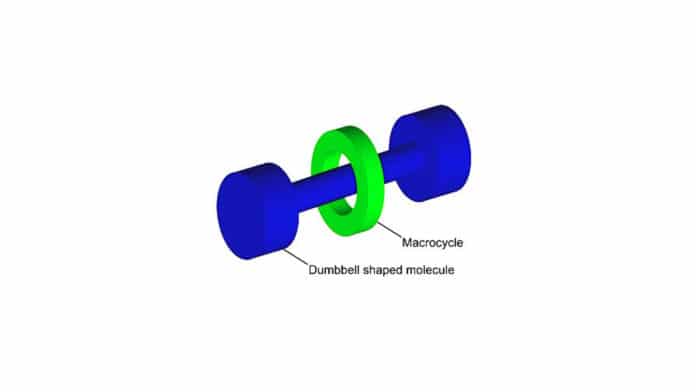Scientists at the University of Amsterdam’s Van ‘t Hoff Institute for Molecular Sciences (HIMS) have developed a high-speed molecular machine, rotaxane. The rotaxane is a molecular structure with a ring-shaped molecule around an elongated wire-shaped molecule, where the ring moves from one side of the wire to the other, just like a shuttle-bus.
The record speed was achieved because of a new molecular design that enabled one side of the wire to draw the shuttle towards it, as it were. Not only this, but a new concept was also used to trigger a photochemical acid-base reaction.
Since long, scientists are working rotaxane-based molecular motors of which the movement can be controlled by light.
In simple rotaxanes, the sliding ring does not have a preferred direction, so it moves randomly over the wire. In contrast, in more advanced rotaxanes, the wire contains molecular “stations” that introduce a preference of the ring for specific locations on the wire.
To move the ring from one station to another, scientists chemically changed these molecular stations using light. In this way, a flash of light of the right color can control movement on a nanometer length scale.
The only problem with the mechanism is travel time. If the ring is at a particular station, and another station is made more attractive using light, you have to wait until the ring spontaneously leaves its starting station, and then ends up at the stronger binding station by a random walk over the wire. If the wire is long, this process can take a long time.
Fred Brouwer and his Ph.D. student Tatu Kumpulainen came up with a solution. They designed a molecular machine in which the terminal station has such a strong attraction to the ring that it deforms the wire allowing the station to grab the ring, and then drag it over the wire to its final destination.
This so-called harpoon mechanism enabled them to create a record speed molecular shuttle. The molecules were made by a master of organic chemistry: Bert Bakker.
Later on, to measure the speed of the molecular shuttle, scientists used a short pulse of ultraviolet light to induce movement of the ring, and then the second pulse of infrared light to follow its motion.
The measured record time was 30 nanoseconds for a covered distance of one nanometer. This means an average speed of 3 cm per second. That may seem slow, but it is 4000 times faster than the fastest biological motor protein (myosin, which causes the contraction of our muscles). One of the challenges for the future is to make the small artificial motor molecules work together, just like the motor proteins in our muscles.
The study is published in the Journal of the American Chemical Society.
